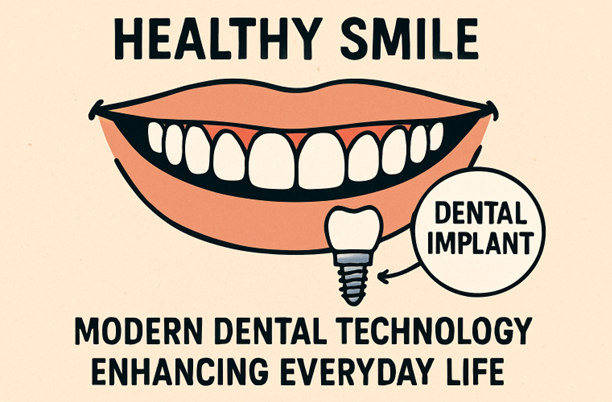Dental implants have become a cornerstone of modern restorative dentistry, providing durable, functional, and aesthetically pleasing solutions for missing teeth. Innovations in materials and technology have transformed the dental implant process, making it more reliable and accessible for people seeking long-term oral health. Today, advancements such as all-on-4 dental implants enable patients to enjoy a new set of teeth in a fraction of the time required for traditional treatment, thereby restoring confidence and improving quality of life.
The integration of digital planning tools and minimally invasive procedures enables patients to experience less discomfort and recover faster. Whether you are missing a single tooth or require full mouth restoration, there is now a range of advanced options designed to suit every need and lifestyle. The focus on patient comfort, long-term durability, and customization distinguishes today’s dental implant solutions from those of previous generations, offering hope and renewed functionality for millions around the world.
Advancements in Implant Materials
For decades, titanium was the gold standard for dental implants due to its robustness and exceptional integration with the jawbone. Today, new biocompatible materials, such as zirconia, are increasingly favored for their natural tooth-like appearance and reduced risk of allergic reactions. Patients with thin or receding gum tissue benefit especially from zirconia implants, as the ceramic blends seamlessly with the natural color of teeth and gums.
Additionally, bioactive coatings applied to implant surfaces accelerate healing and improve the osseointegration process, where bone fuses to the implant. These coatings release minerals and proteins that stimulate bone growth, making implants more stable and long-lasting.
Digital Imaging and 3D Printing
Digital technology has revolutionized planning and placement in dental implantology. Dentists now use digital impressions, which offer a far more comfortable and accurate alternative to traditional molds, to construct highly detailed models of a patient’s mouth. 3D printing is then used to fabricate surgical guides and custom abutments, ensuring precise implant placement and optimal aesthetic results. This level of accuracy reduces the risk of complications and shortens the overall treatment timeline.
With digital workflows, treatment plans are tailored to the smallest anatomical detail, improving patient outcomes and providing a predictable path from planning to final restoration. According to Dentaly, these innovations are making advanced dental care more widely available and reliable.
Minimally Invasive Techniques
Contemporary dental implant procedures have become less invasive, drastically reducing post-surgery discomfort. Techniques like flapless surgery and guided implant placement minimize the need for incisions and sutures. Using highly detailed imaging data, dentists can drill and place implants through pinpoint incisions, preserving vital tissues and accelerating recovery.
This approach enables many patients to experience less swelling and virtually no bleeding, allowing for a faster return to daily activities. Shorter recovery times and fewer complications are helping demystify the implant process, making it more appealing to those who previously hesitated.
Immediate Load Implants
The advent of immediate load implants, commonly referred to as “teeth-in-a-day,” is revolutionizing expectations surrounding dental restoration. Rather than enduring months without teeth while waiting for implants to integrate, patients can walk out of the dental office with a fully functional temporary prosthesis. Procedures like the All-on-4® technique further optimize outcomes by supporting an entire dental arch using as few as four implants, strategically positioned for maximum stability and esthetics.
This innovation significantly reduces treatment time and enhances the quality of life for patients, restoring their ability to eat, speak, and smile confidently almost immediately. For those seeking highly efficient and reliable treatment, these newer protocols are setting a new benchmark in dental care.
Smart Implants with Real-Time Monitoring
Dental technology is making implants smarter than ever before. The integration of miniature sensors into modern implants allows continuous monitoring of pressure, temperature, and surrounding bacterial activity. Real-time feedback is sent to both the patient and the clinician, allowing for the early detection of potential issues, such as infection or overloading.
With proactive monitoring capability, these smart implants offer a way to extend longevity and prevent costly complications, setting a new standard for preventive care in restorative dentistry. Such innovations align with the broader trend toward connected devices in healthcare.
Computer-Guided Surgery
Computer-guided surgery has significantly reduced the guesswork involved in implant placement. Using 3D scans and specialized planning software, dental professionals can simulate the exact position, angle, and depth of each implant before placement. This high degree of precision reduces human error, shortens surgery time, and significantly improves safety for even the most complex cases.
Planning and rehearsing the surgery virtually allows for more accurate transmission of the plan to the patient’s mouth using custom 3D-printed surgical guides. As a result, the actual procedure is smoother and less traumatic, resulting in superior aesthetic and functional outcomes.
The Future of Dental Implants
Ongoing research suggests a future where dental implants will be even more personalized, efficient, and minimally invasive. Among the most promising advancements are root-analogue implants, which are shaped to precisely fit a patient’s tooth socket immediately after extraction, thereby preserving natural healing structures. Additionally, the use of growth factors, such as platelet-rich plasma (PRP), is being investigated to accelerate the healing process and enhance integration, leading to more predictable outcomes.
These innovations, combined with patient-centered digital workflows and smart monitoring, promise to make dental implants accessible to even broader populations. Whether you’re replacing a single missing tooth or rebuilding an entire smile, the field of dental implants is poised to deliver an ever-brighter future for oral health.
